Driver Manager Continue Using a Manually Installed Driver
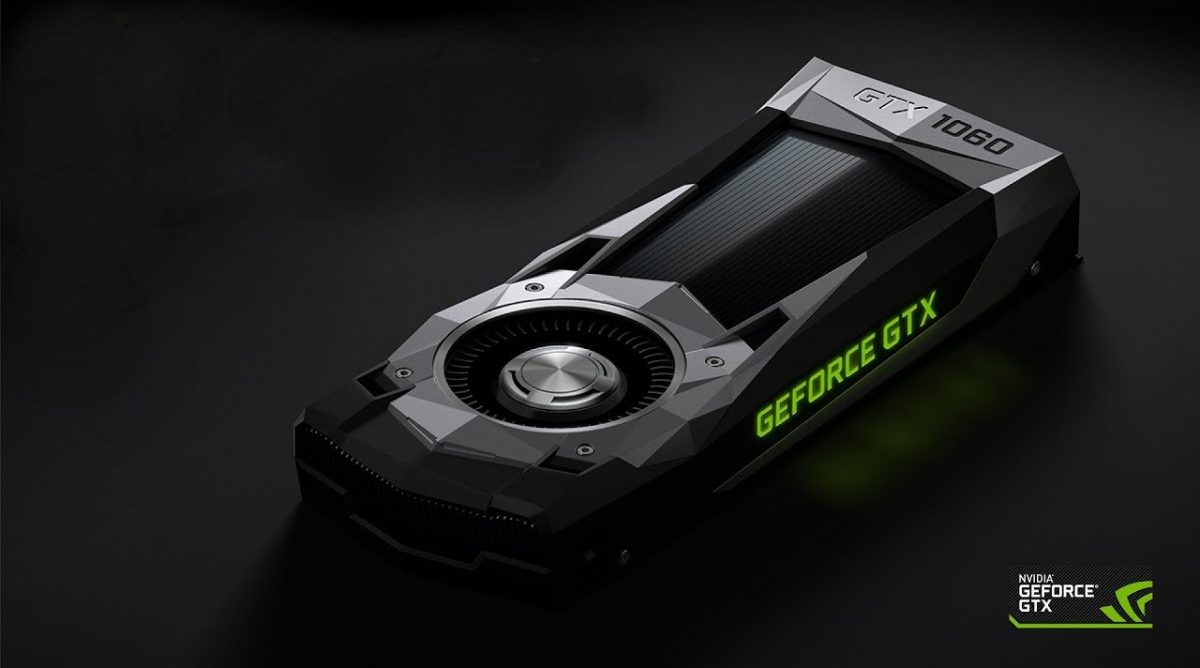
If you attempt to install NVIDIA driver but it's not installing, you're not alone. The NVIDIA driver installation may fail due to a range of causes, but don't worry. This problem is actually not hard to fix, and you just need to take a few steps.
Fixes to try:
Here is a full list of solutions for the NVIDIA drivers not installing issue. You don't have to try them all. Simply work from the top down until you find the one that does the trick.
- Automatically install your NVIDIA driver
- Clean install the NVIDIA driver
- Temporarily disable antivirus
- Repair your system
Fix 1 – Automatically install your NVIDIA driver
The manual driver installation can be time-consuming and error-prone for users who don't have much computer skills. If you're not comfortable playing around with drivers manually, you can install the NVIDIA drivers automatically with Driver Easy.
Driver Easy is a powerful tool that detects, downloads and (if you go Pro) installs any driver updates that your computer needs. You don't need to know exactly what system your computer is running, you don't need to be troubled by the wrong driver you would be downloading, and you don't need to worry about making a mistake when installing.
- Download and install Driver Easy.
- Run Driver Easy and click theScan Now button. Driver Easy will then scan your computer and detect any problem drivers.
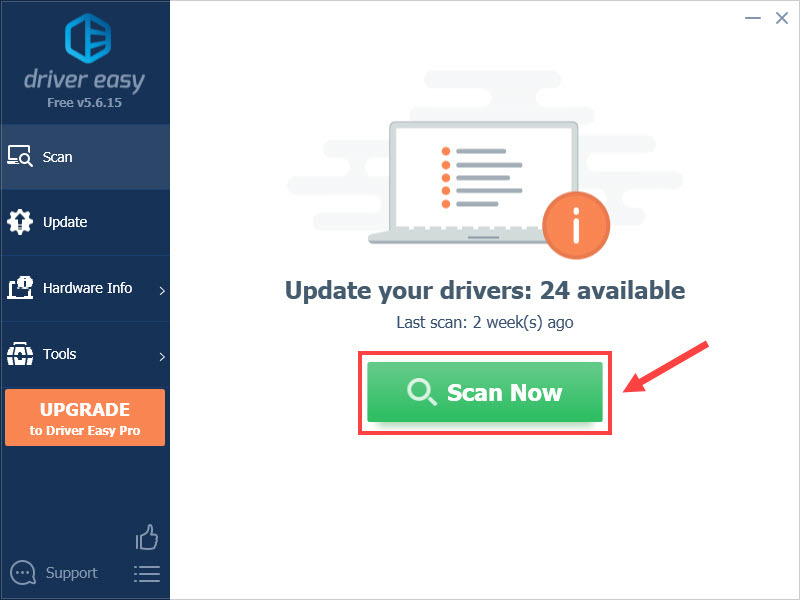
- Click the Update button next to the NVIDIA driver to automatically download the correct version of that driver, then you can manually install it (you can do this with the FREE version).
Or click Update All to automatically download and install the correct version of all the drivers that are missing or out of date on your system. (This requires the Pro version which comes with full support and a 30-day money-back guarantee. You'll be prompted to upgrade when you click Update All.)
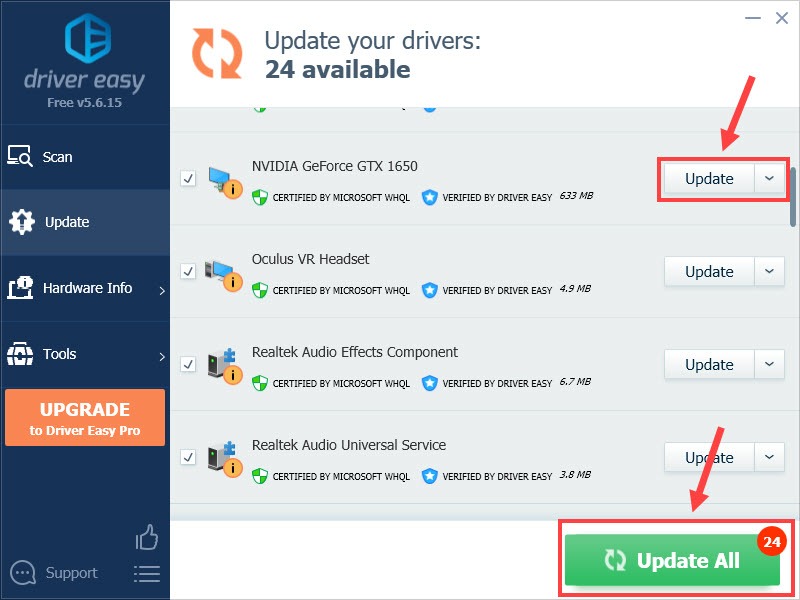
The Pro version of Driver Easy comes with full technical support.
If you need assistance, please contactDriver Easy's support team atsupport@drivereasy.com.
Restart the computer to employ the changes, and you should be getting the latest NVIDIA driver. If it still doesn't function properly, check out the next method below.
Fix 2 – Clean install of the driver
If you're using the GeForce Experience app to update your graphics driver but it's not installing or working as intended, consider downloading the driver itself from the official NVIDIA website and performing a clean installation. Before getting started, make sure you stop the NVIDIA-related programs or files. Here's how:
End NVIDIA processes
- Right-click any empty space on your taskbar and click Task Manager.
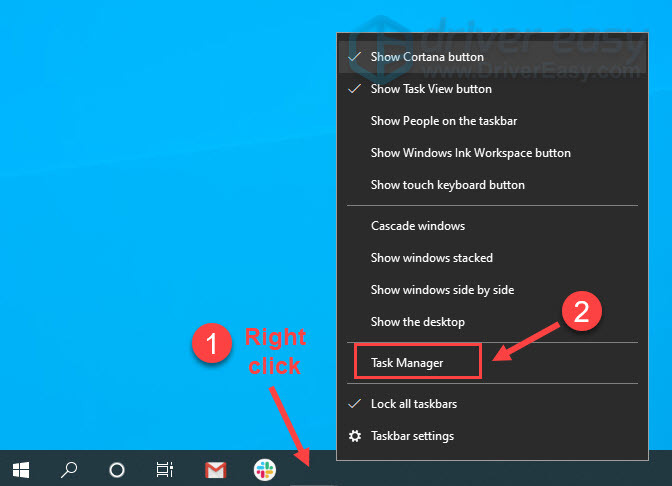
- Select processes that are associated with NVIDIA, which should have NVIDIA in the name, and click End Task one by one.
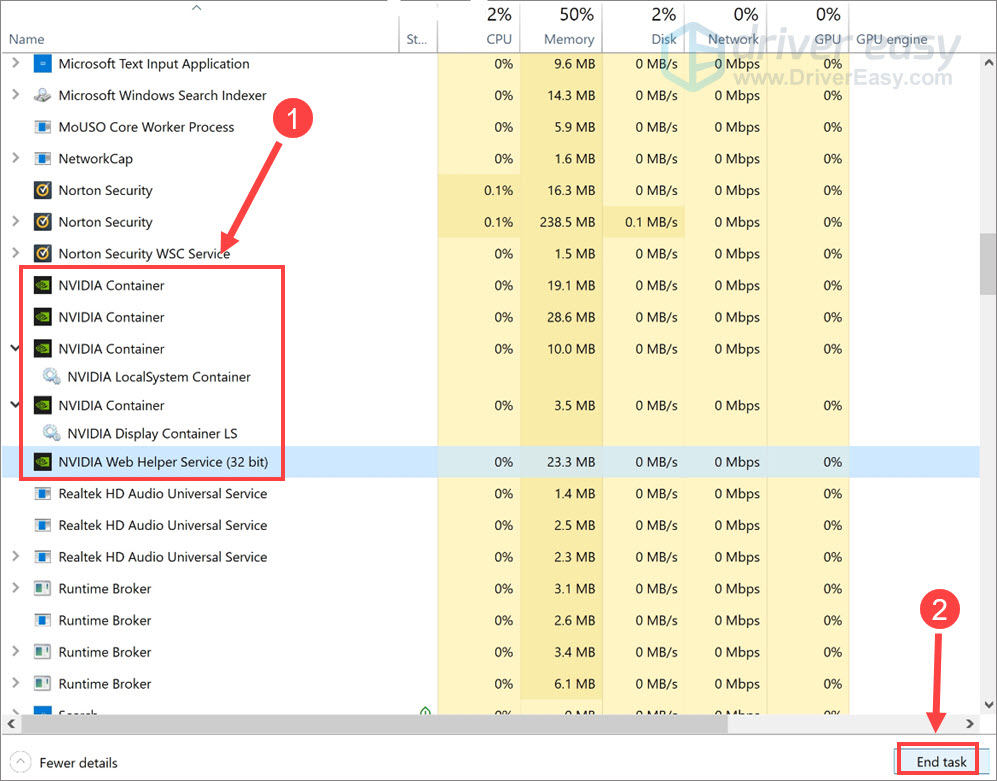
- On your keyboard, press the Windows logo key and R at the same time to invoke the File Explorer.
- Navigate to the following folders and delete the files.
C:\Program Files\NVIDIA Corporation
C:\Program Files (x86)\NVIDIA Corporation
C:\Windows\System32\DriverStore\FileRepository\nv_lh document
C:\Windows\System32\DriverStore\FileRepository\nvoclock document
C:\Windows\System32\DriverStore\FileRepository\nvdsp.inf document
Clean install the NVIDIA driver
- Go to the NVIDIA driver download page.
- Choose the Product Type, Product Series and Product appropriately, and then click SEARCH.
To download the optimized driver for the latest games, chooseGame Ready Drivers next to Download Type, or you can selectStudio Drivers for the design purposes.

- Check if the operating system is detected correctly. If yes, click DOWNLOAD.
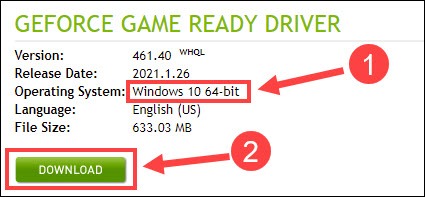
- Once done, right-click the downloaded file and select Run as administrator. Then specify the folder that the driver installer is to be installed.
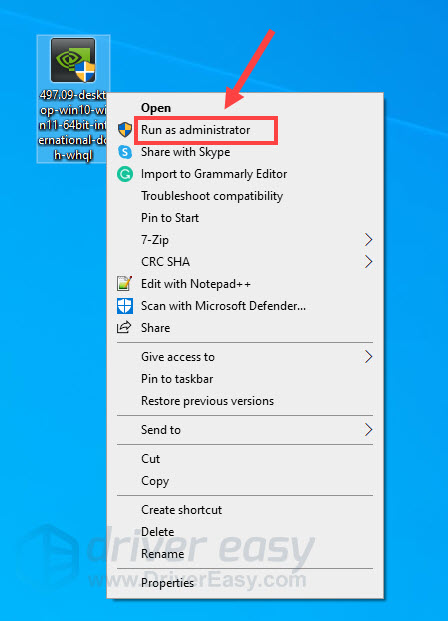
- Choose NVIDIA Graphics Driver and click AGREE AND CONTINUE.
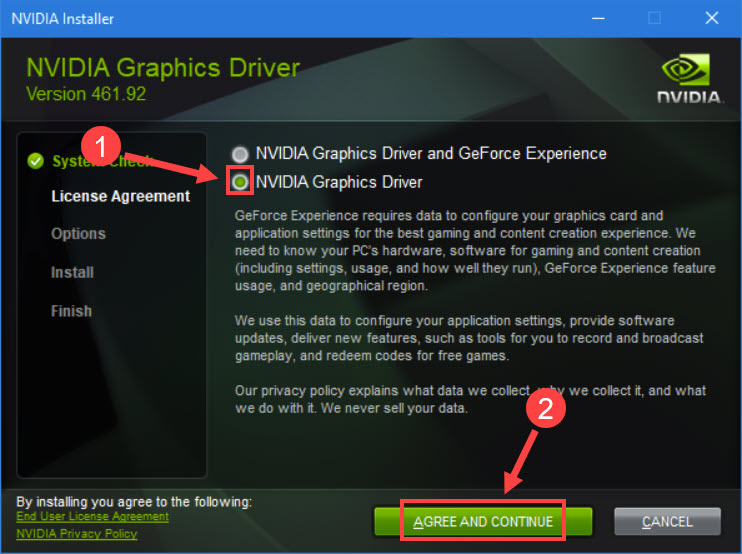
- Tick Custom (Advanced) and click NEXT.
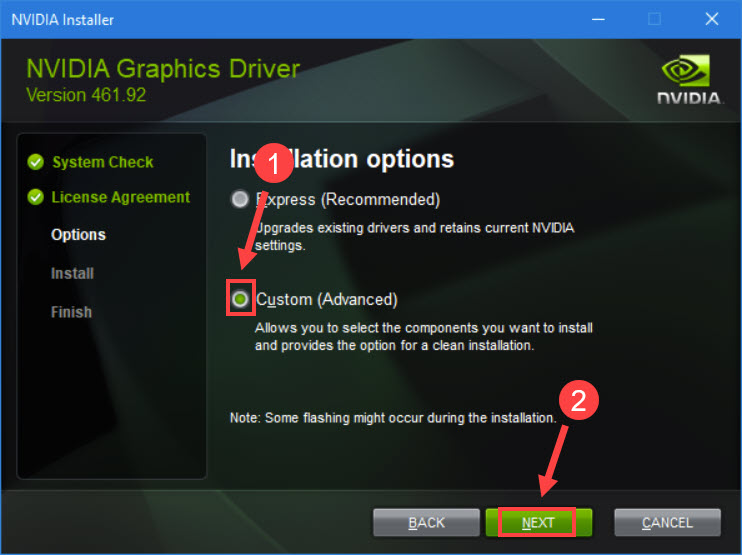
- Tick Perform a clean installation and click NEXT.
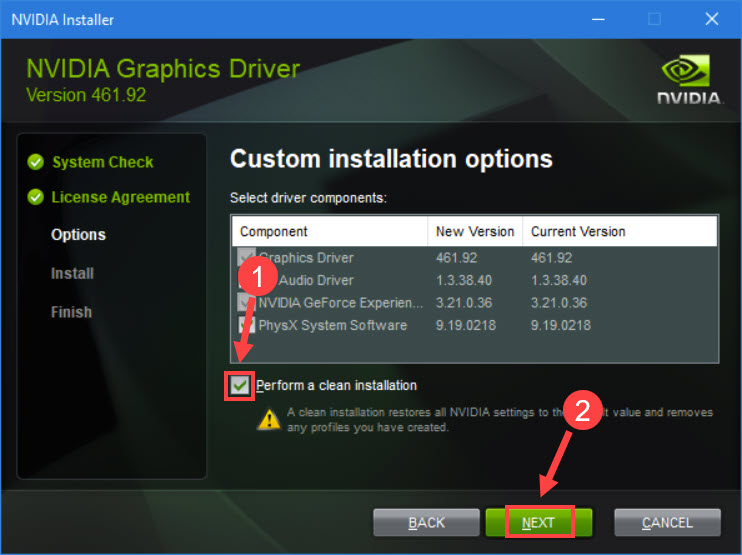
After you finish installing, reboot the machine for the changes to take effect. Now test if your NVIDIA driver is back on track. If not, move on to the third fix.
Fix 3 – Temporarily disable antivirus
The program you're running in the background, whether it's a GPU monitoring utility or antivirus software, might conflict with your NVIDIA driver installer and prevent it from launching. To see if that's the case, you can temporarily disable those background programs and install the NVIDIA driver again. If the installation goes smoothly, then congrats! If the issue persists, don't frustrate. There is one more fix to try.
Fix 4 – Repair your system
If none of the methods helped, you're likely to encounter a critical system issue. Missing or damaged system files can lead to different types of installation issues on your computer. To fix it and keep your system at tip-top condition, you should perform a thorough scan and repair.
Reimage is a safe and professional repair solution with various functions. It can not only replace corrupted Windows files and components, but also detect security threats like viruses or malware while improving your PC's stability. And most importantly, it won't harm your custom settings or personal data during the process.
- Download and install Reimage.
- Open Reimage and click Yes to run a free scan of your PC.
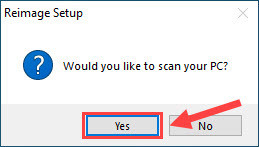
- Reimage will scan your computer thoroughly. This may take a few minutes.
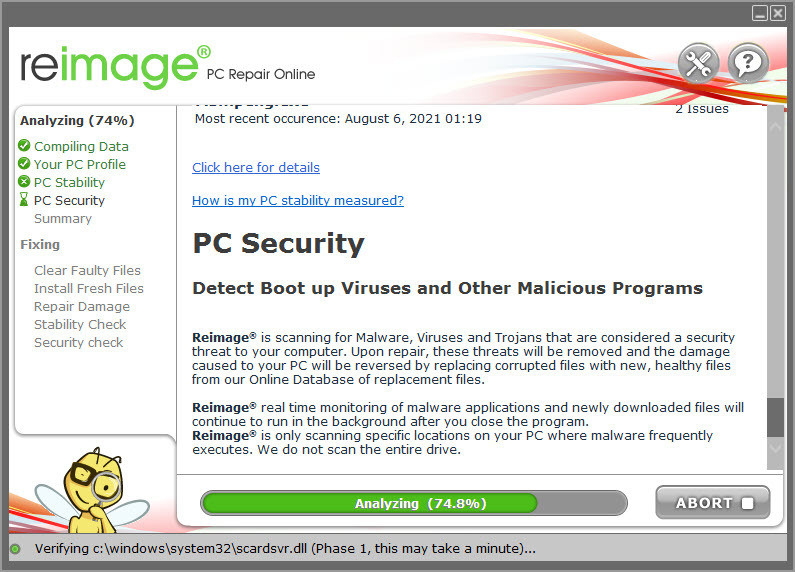
- Once done, you'll see a detailed report of all the issues on your PC. To fix them automatically, click START REPAIR. This requires the purchase of the full version, which comes with a 60-day money back guarantee so that you can refund any time if Reimage doesn't solve the issue.
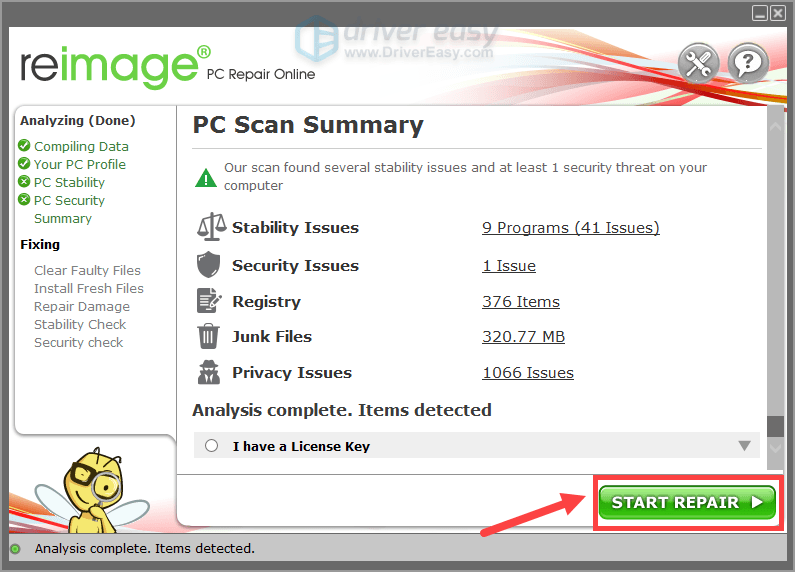
With in-depth troubleshooting, your computer should be restored to the best performance and see no more driver errors.
So this is how to resolve the NVIDIA drivers not installing problem. If you have any questions or suggestions, feel free to leave a comment and we'll be glad to help.
2
2 people found this helpful
wrightstentartudge.blogspot.com
Source: https://www.drivereasy.com/knowledge/nvidia-drivers-not-installing/
0 Response to "Driver Manager Continue Using a Manually Installed Driver"
Post a Comment